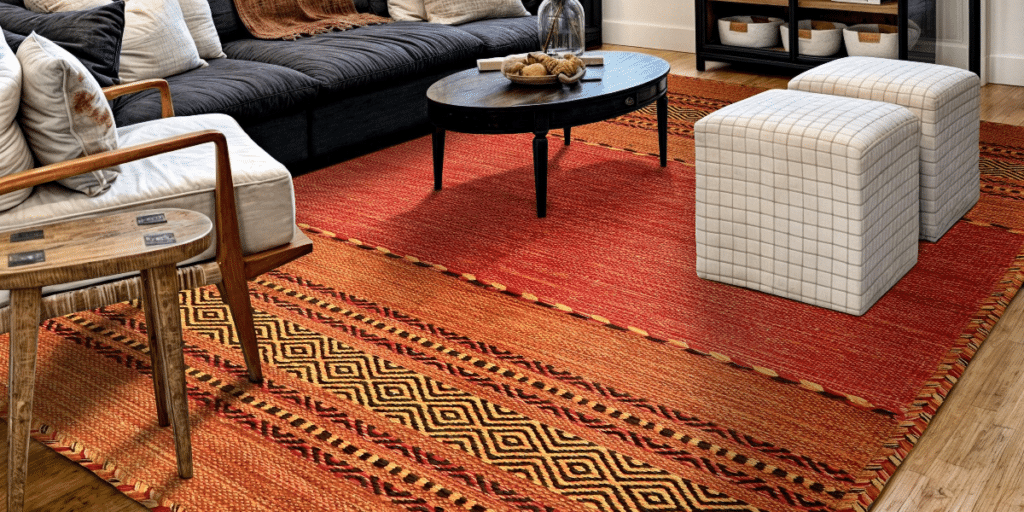The world of kilim rugs is as rich and vibrant as the patterns they display. These flat-woven masterpieces, steeped in cultural history, are more than just decorative items—they’re stories woven into fabric. But how do you distinguish an authentic kilim from a modern reproduction? A genuine kilim is defined by its flat weave, handwoven craftsmanship, and symbolic designs that reflect its origin. This guide answers key questions: how to date a kilim, spot authenticity, and recognize regional styles like Turkish, Persian, and Moroccan kilims. Let’s dive in!
How To Date A Kilim Rug?

Dating a kilim rug requires examining its craftsmanship, materials, and patterns while understanding how weaving techniques evolved over time. One key method is to analyze the knots per square inch (KPSI) along the warp threads. Use a ruler to count the number of knots in one inch of warp, then rotate it 90 degrees to measure across the width. Older kilims tend to have a lower KPSI,18th and 19th-century kilims rarely exceed 400 KPSI, whereas modern kilims may feature tighter weaves.
- Materials and Dye: Older kilims are typically made from handspun wool and dyed with natural, plant-based dyes. These dyes create subtle variations in color, known as abrash, a hallmark of authenticity and age. Modern kilims often use synthetic dyes, which produce more uniform tones.
- Patterns and Motifs: Certain motifs can hint at the era of production. For instance, geometric patterns were more prevalent in earlier kilims, while floral designs gained popularity in later periods. Tribal symbols, such as stars, hands, and animals, often signify an older, traditional kilim.
- Wear and Patina: Over time, the wool in kilims develops a soft sheen or patina. Check for consistent wear in high-traffic areas. Uneven fading or damage could indicate an antique piece, but excessive damage might lower its value.
- Construction Techniques: Examine the weave. Older kilims often have tighter, more precise knots and a symmetrical structure. Handmade kilims show slight irregularities, a testament to their authenticity.
How Can You Tell If A Kilim Rug Is Real?

Authenticating a kilim rug starts with understanding its construction and design. Here are key factors to confirm its authenticity:
- Flat Weave Construction: Kilims are flat-woven, meaning they lack the pile found in other rugs. The designs are created by weaving weft threads over and under the warp threads, resulting in a lightweight, reversible rug.
- Handwoven Irregularities: Genuine kilims are handmade, so slight imperfections in the weave or design are normal and even desirable. Machine-made kilims are often too uniform.
- Material Quality: Authentic kilims use natural materials like wool, cotton, or sometimes silk. Synthetic materials indicate a reproduction.
- Dye Consistency: Natural dyes give variations in color due to the organic nature of the pigments. Synthetic dyes will appear more even and lack depth.
- Cultural Signatures: Kilims often reflect the traditions of the weaver’s region or tribe. Specific motifs, patterns, and color palettes can signal authenticity and origin.
What are Turkish kilims?

Turkish kilims, often called Anatolian kilims, are some of the most iconic and historically significant flat-woven rugs in the world. These masterpieces trace their origins to the Anatolian region, modern-day Turkey, where they’ve been crafted for centuries by nomadic tribes and rural communities.
What sets Turkish kilims apart is their bold geometric patterns and symbolic motifs, each telling a unique story. From the elibelinde (a symbol of motherhood and fertility) to the kocboynuzu (representing power and masculinity), these designs carry deep cultural and spiritual meaning.
Their vibrant colors—achieved through natural dyes—add to their charm, featuring rich reds, deep blues, and earthy tones that reflect the landscapes of Anatolia. Woven using the slit-weave technique, Turkish kilims are known for their durability, lightweight nature, and exquisite craftsmanship, making them both practical and beautiful additions to any home.
What are Persian kilim?
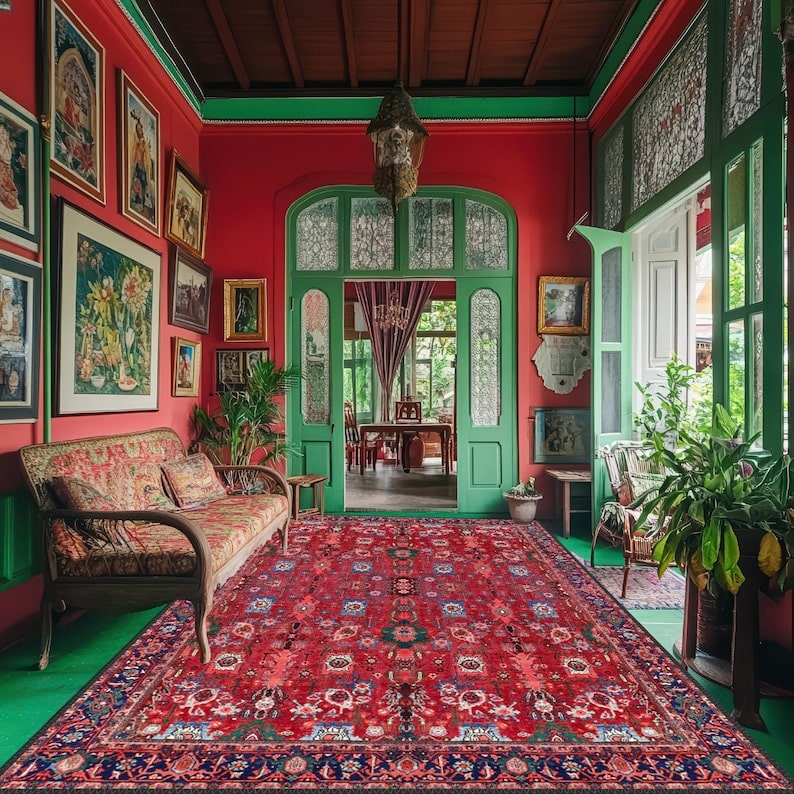
Persian kilims, originating from Iran, stand out for their intricate designs and exceptional craftsmanship.
- Historical Significance: Persian kilims trace their roots to ancient Persia and were widely used for practical and decorative purposes. Some of the most well-known types include Shiraz and Qashqai kilims.
- Patterns and Motifs: Persian kilims often feature intricate floral and medallion designs, reflecting the Persian aesthetic. These patterns can be more elaborate than the geometric motifs found in Turkish kilims.
- Material and Texture: Persian kilims are woven with high-quality wool, and their texture is often smoother compared to other kilims.
- Unique Characteristics: Persian kilims are sometimes double-sided, with intricate patterns on both sides, showcasing the weaver’s skill.
What are Moroccan Kilim?
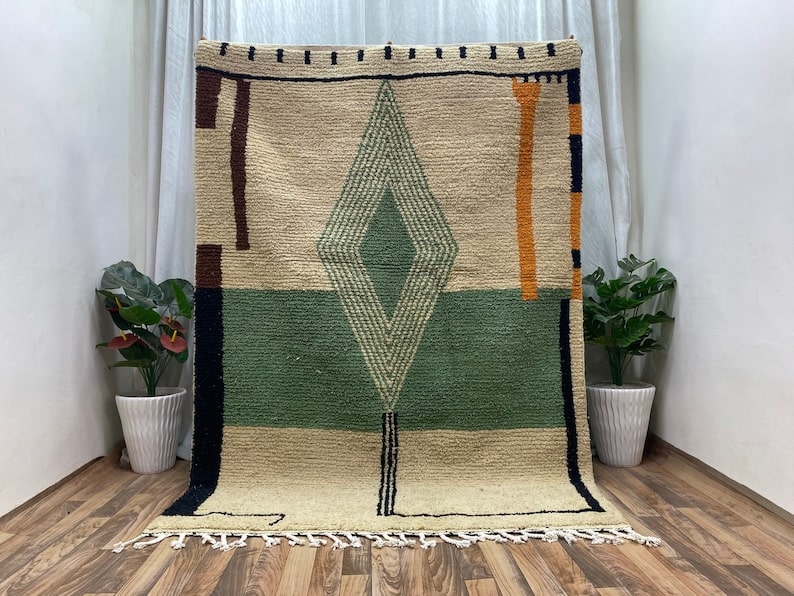

Moroccan kilims are a true reflection of the rich cultural heritage and artistic traditions of the Berber tribes in the Atlas Mountains. Each Moroccan kilim tells a story, with motifs and symbols representing aspects of daily life, nature, and dreams—transforming these rugs into woven narratives.
What makes Moroccan kilims especially distinctive is their vibrant palette, typically made from wool and cotton. The wool used is usually handspun and slightly coarser, giving the kilims a textured, rustic charm that sets them apart from the smoother finishes of Persian or Turkish kilims. These rugs are versatile and functional, often used as floor coverings, wall hangings, or even bedspreads.
How To Tell The Difference Between Kilim Rugs and Others?
At first glance, kilim rugs may look similar to other flat-woven rugs, but once you dive deeper, their unique features become clear. Understanding these differences can help you identify a true kilim and appreciate what sets it apart from other styles like Dhurries, Soumaks, or traditional Persian rugs.
| Feature | Kilim Rugs | Dhurrie Rugs | Soumak Rugs | Persian Rugs |
| Weaving Technique | Flat-woven, slit-weave method | Flat-woven, simpler weave | Flat-woven with extra wrapping threads | Pile weaving (not flat-woven) |
| Design | Geometric patterns, symbolic motifs | Simpler, repetitive patterns | Textured, embroidered effect | Intricate floral or medallion designs |
| Materials | Wool (sometimes cotton), natural dyes | Cotton (often), synthetic dyes in modern versions | Wool, hand-spun, often with a richer texture | Wool, silk, or a mix, often luxurious |
| Color Palette | Rich, earthy tones with natural variations | Bright, uniform colors | Muted colors with texture variation | Rich, vibrant colors, often with intricate detail |
| Texture | Smooth, flat, lightweight, reversible | Thicker than kilims, flatter than Soumaks | Heavier, with a noticeable texture | Soft, plush pile (not flat) |
| Cultural Origin | Turkey, Iran, Morocco (Anatolia, Berber) | India (primarily) | Caucasian, Central Asia | Iran (Persian), often associated with luxury |
| Use | Floor covering, wall hanging, decorative piece | Floor covering, casual, simple designs | Textured surfaces, often used as decorative art | Floor covering, often used in more formal settings |
What Is The Difference between Kilim and Dhurrie Rugs?
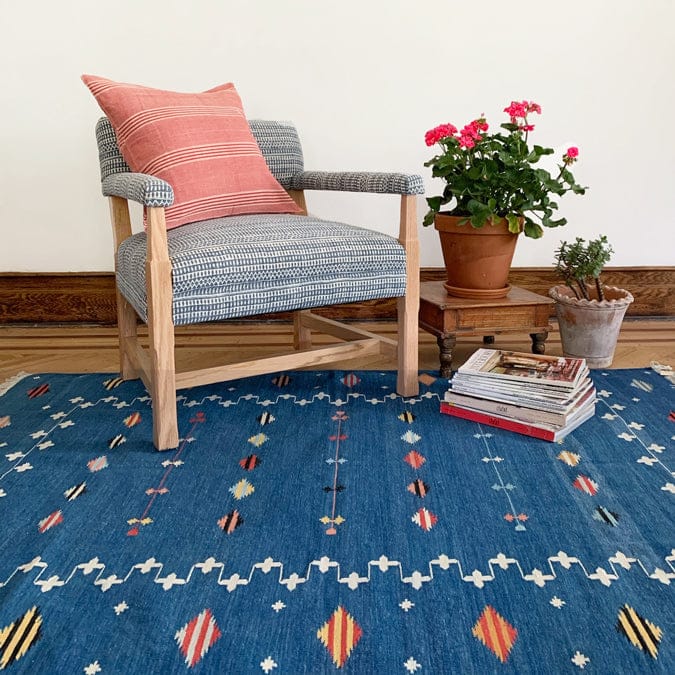
Kilims and Dhurrie rugs may look similar because they are both flat-woven, but there are several key differences:
- Weaving Technique: Kilims are woven using a slit-weave technique, which creates sharp, geometric patterns and allows for intricate designs. Dhurries, on the other hand, are typically woven with a simpler weave, often using a plain weave or a basic variation of it.
- Texture: Kilims are thin and flat with a smooth texture, while Dhurries are generally thicker and more cushioned, giving them a slightly softer feel underfoot.
- Design: Kilims feature bold, geometric patterns, often with cultural or symbolic meanings. Dhurries tend to have more simple, repetitive patterns, often with striped designs or basic motifs.
- Material: Both are traditionally made from wool, but Dhurries are more often made from cotton, making them lighter and more affordable compared to the wool used in Kilims.
- Origin: Kilims are commonly associated with regions like Turkey, Iran, and Morocco, while Dhurries are traditionally from India and Pakistan.
What Is The Difference Between Soumak and Kilim?

Soumak and Kilim rugs may look similar at first glance, but the differences are in the details:
- Weaving Technique: Kilims use a slit-weave method, while Soumaks involve wrapping the weft threads around the warp, creating a raised, textured effect.
- Texture: Soumak rugs are thicker with a textured surface, while Kilims are flat and lightweight.
- Design: Kilim designs are bold and geometric, while Soumaks often feature intricate, detailed patterns with more depth.
- Durability: Soumak rugs tend to be sturdier and better suited for high-traffic areas, while Kilims are lighter and more flexible.
- Material: Both are often made of wool, but Soumaks sometimes include silk for added texture.
What Is The Difference Between Persian and Kilim Rugs?
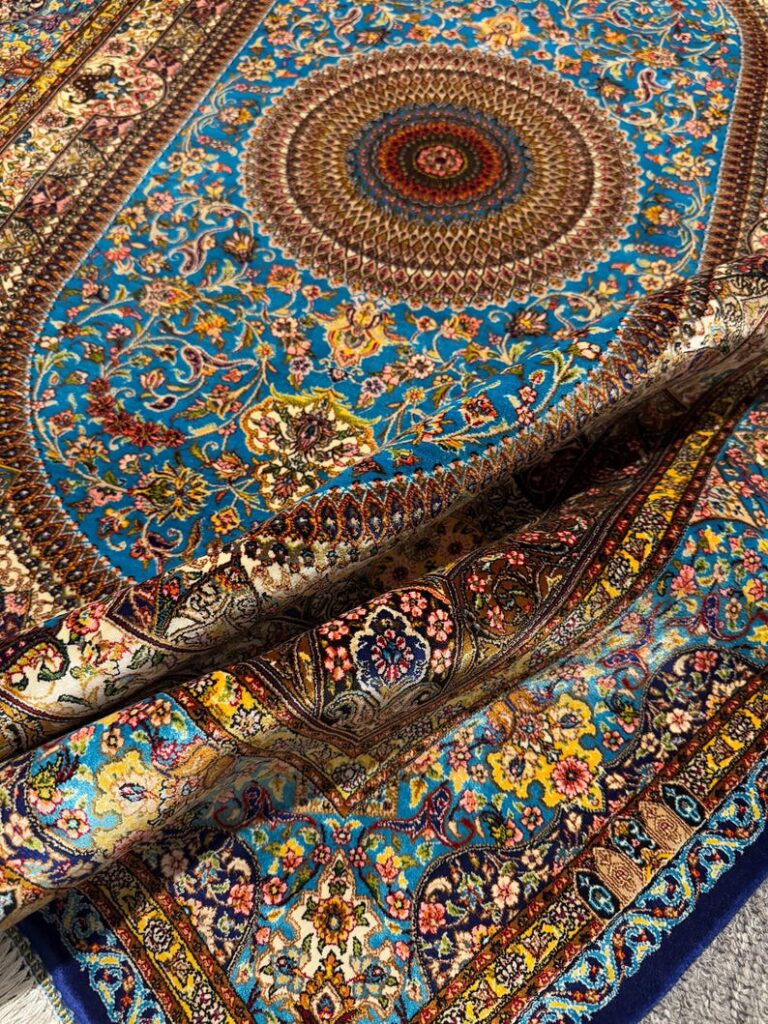
While both Persian and Kilim rugs are highly valued for their craftsmanship and beauty, they differ in several key ways:
- Weaving Technique: Persian rugs are typically pile-woven, meaning they have a soft, raised surface due to the knots tied around the warp threads. Kilims, on the other hand, are flat-woven, with no pile.
- Texture: Persian rugs have a plush, thick texture thanks to their pile, making them softer underfoot and more luxurious. Kilims are flat and thin, with a more rigid feel, but they are more durable and versatile for different uses like wall hangings or floor coverings in high-traffic areas.
- Design: Persian rugs are known for their intricate, detailed patterns, often featuring floral motifs, medallions, or complex borders. Kilims, in contrast, typically have bold, geometric patterns with tribal or symbolic meanings.
- Material: Persian rugs are often made from high-quality wool, silk, or a combination of both, giving them a rich sheen and luxurious feel. Kilims are usually woven from wool or cotton, with natural dyes creating earthy tones and subtle variations.
- Origin: Persian rugs are from Iran (formerly Persia) and are often associated with luxury and high value. Kilims, while also found in Iran, are more commonly associated with regions like Turkey, Morocco, and the Caucasus.
Wrap Up

Kilim rugs collection
Explore a diverse collection of rugs crafted for style and durability. From kilims to modern designs, find your perfect rug at Kilim Provenance.
At Kilim Provenance we’re passionate about sharing the beauty and rich history behind Kilim rugs. Our collection offers a range of authentic, high-quality pieces that showcase the diverse traditions of flat-weaving from around the world. Whether you’re a first-time buyer or a seasoned collector, we hope this guide has helped you learn how to identify a Kilim and appreciate the craftsmanship that goes into each one. Thank you for exploring the world of Kilim rugs with us!

